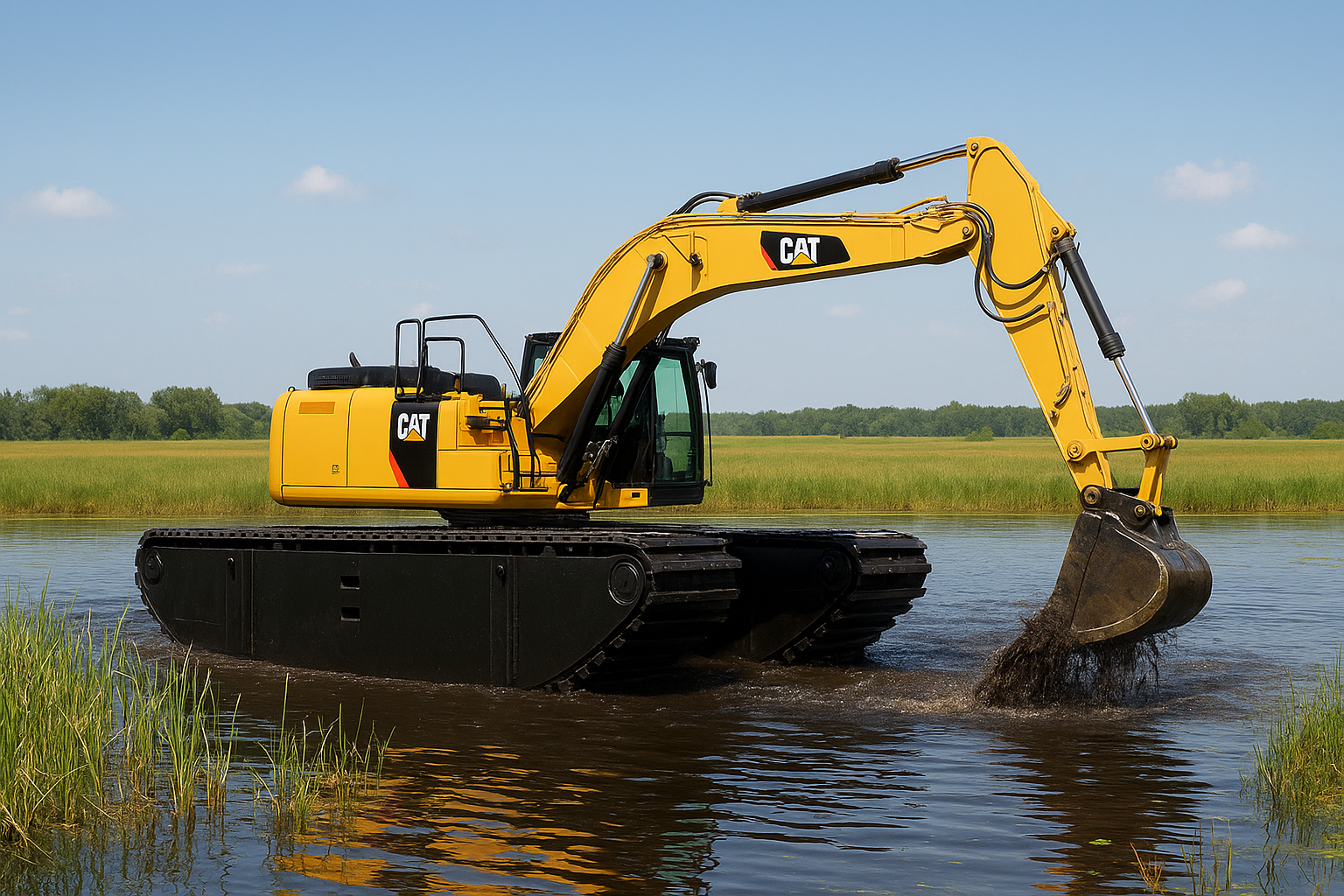Enthusiast Corner
Mud, Swamps, and Marshes: Amphibious Excavators in Action
When the ground turns to soup and conventional machines sink to their axles, amphibious excavators rise to the challenge. These unique machines are built to go where others can’t — across swamps, marshlands, and flooded job sites — tackling some of the toughest working conditions on Earth.
Built for the Wet and Wild
At first glance, an amphibious excavator looks like a regular long-reach excavator that’s been given a pair of pontoons. And that’s not far off. Instead of sitting on steel tracks mounted to a rigid undercarriage, these specialized excavators ride on sealed pontoons fitted with track chains. The pontoons are filled with air chambers for buoyancy, allowing the machine to float and move steadily through shallow water or soft, unstable terrain.
Many models can be fitted with additional side pontoons or spuds for added stability in deeper water, giving operators the confidence to work where footing is unpredictable or nonexistent.
What They’re Used For
Amphibious excavators shine in a range of jobs that combine land and water work:
- Dredging and sediment removal: Cleaning out silted ponds, canals, and riverbeds without the need for barges or cranes.
- Wetland restoration: Restoring natural water flow in marsh ecosystems and protecting sensitive habitats.
- Pipeline and utility work: Installing or maintaining lines that cross wetlands and low-lying areas.
- Flood control and levee repair: Reinforcing embankments and drainage systems after storms.
- Mining and peat harvesting: Working in saturated, soft-soil areas that would swallow standard equipment.
How They Stay Afloat
The engineering behind amphibious excavators is as impressive as their performance. Their undercarriage is built from corrosion-resistant steel and sealed to prevent water ingress. The tracks are often made of reinforced rubber or heavy-duty steel, designed for traction in water and muck alike.
Hydraulic systems are protected from moisture, and some machines are even equipped with water-jet propulsion systems for maneuvering in deeper areas. Despite their size and complexity, these machines can still be transported over land with detachable pontoons for easier hauling.
Real-World Performance
Operators who run amphibious excavators often describe the experience as “walking on water.” They can float, pivot, and reach areas where even track loaders or dozers would bog down. In many cases, using an amphibious excavator eliminates the need for costly access roads, mats, or barges, cutting both cost and environmental impact.
In regions with heavy rainfall, soft ground, or wetlands — like the Gulf Coast, Northern Canada, and parts of the Pacific Northwest — they’re an indispensable part of modern construction and restoration work.
The Bottom Line
Amphibious excavators prove that with the right engineering, there’s no such thing as “too muddy” for a job site. Whether reclaiming wetlands, dredging waterways, or building infrastructure across marshes, these machines redefine what’s possible when land and water meet.
They’re the ultimate reminder that in the heavy equipment world, adaptability is everything — and sometimes, the best way forward is to float.

